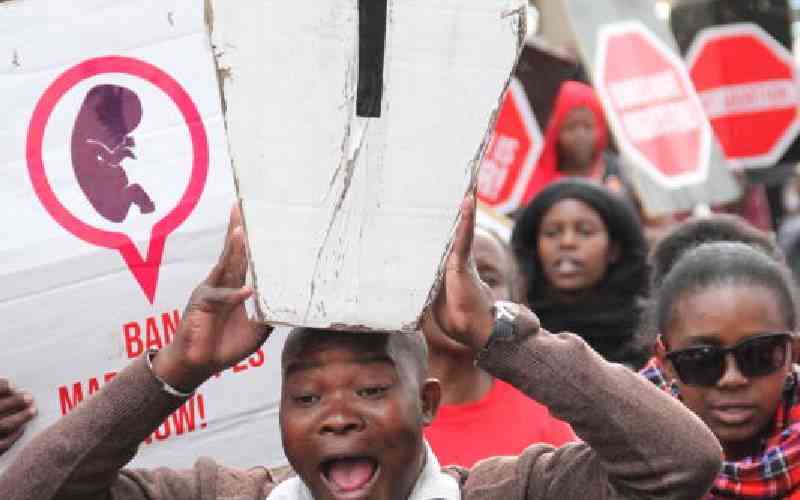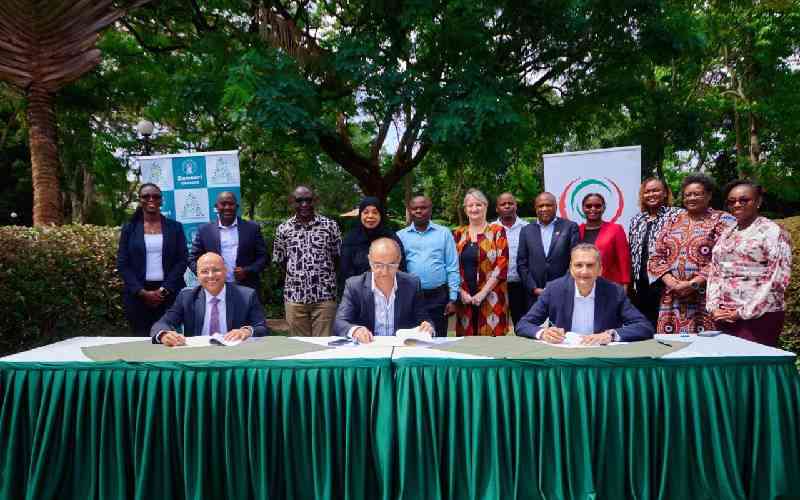
Every time a mother gives birth in Kenya, she is rolling the dice with death. It’s a gamble that can end in joy or tragedy.
At the heart of this grim reality is postpartum haemorrhage (PPH), a condition that kills more women in Kenya than road traffic accidents.
PPH causes around 40 per cent of maternal deaths in Kenya, according to surveys, a staggering toll often overlooked. While road crashes dominate headlines, PPH quietly kills more mothers during childbirth, making it a deadlier but less visible threat to women’s lives.
“The problem is that PPH often ambushes healthcare providers. It can occur suddenly, and without proper preparation, it can claim a mother’s life within minutes,” says Dr Mugeni Richard, an obstetrician-gynaecologist and Head of Department at Moi Teaching and Referral Hospital in Eldoret.
According to the World Health Organisation (WHO), over 287,000 women died globally in 2020 due to complications related to pregnancy and childbirth. PPH is the leading direct cause, responsible for about 25 per cent of maternal deaths worldwide. The toll is even higher in sub-Saharan Africa, where access to emergency obstetric care is limited.
In Kenya, the maternal mortality ratio (MMR) stands at 355 deaths per 100,000 live births (KDHS 2022), compared to a global average of 223. PPH is the single largest contributor to these deaths.
One of the main causes of PPH is placental abnormality. Conditions, such as placenta praevia, where the placenta implants in the lower part of the uterus, increase the risk of severe bleeding during or after delivery.
“Placenta praevia affects around three to five women per 1,000 pregnancies. Risk factors include prior caesarean sections, fibroid surgery, smoking, and multiple pregnancies. Women who’ve had placenta praevia before are more likely to experience it again,” explains Dr Mugeni.
- WHO maintains mpox alert amid West Africa surge
- WHO report reveals progress in tobacco war but gaps remain
- Silent killer: Postpartum bleeding still claims ten mothers every day
- Missed vaccination risks a child's life as eradicated diseases return
Keep Reading
Unseen truths
In more severe cases, the placenta may invade deeply into the uterine wall, a dangerous condition known as placenta accreta spectrum. This creates fragile blood vessels that can rupture during delivery. “In such cases, the bleeding is so intense that the only option may be to remove the uterus to save the mother’s life,” he adds.
After delivery, the placenta is supposed to detach and be expelled within 30 minutes. However, sometimes it becomes retained, or a portion called a lobe remains inside the uterus, causing massive bleeding and requiring immediate surgical intervention.
Even caesarean sections, widely perceived as a safer alternative to vaginal birth, carry major risks, especially in the presence of placental abnormalities.
“These are not routine surgeries. A caesarean in such cases is highly complex and should only be done by skilled professionals,” says Dr Mugeni.
A 2023 WHO study found that two-thirds of maternal deaths could be prevented through access to emergency obstetric care, skilled health workers, and timely interventions, such as blood transfusions and uterotonic drugs.
In Kenya, many of these life-saving interventions remain out of reach, particularly in rural and low-resource settings.
But preparation is key. Women must be assessed thoroughly during antenatal care, and those at risk of abnormal placentation should be referred to well-equipped facilities with access to blood banks and experienced surgical teams.
In more advanced centres, doctors can perform uterine artery embolisation or surgical techniques to control bleeding. In select cases, the placenta may even be left in place and treated with medication.
One major hurdle remains: blood availability. “You can’t stop PPH without blood. We urgently need stronger national blood donation drives. Blood must be available, especially in maternity wards,” Dr Mugeni warns.
Preventative measures start early. Women are often prescribed iron supplements during pregnancy to build haemoglobin levels, increasing their chances of surviving blood loss.
Underqualified personnel
As Kenya rolls out Universal Health Coverage (UHC), the government aims to decentralise care and detect high-risk pregnancies earlier. Primary health centres are expected to identify and refer such cases to higher-level facilities before complications arise.
However, Dr Mugeni expresses concern over an emerging issue: underqualified personnel performing caesarean sections.
“There was even an attempt under task-sharing policies to allow clinical officers to conduct caesareans. But surgery is both an art and a science. Without the depth of training needed to handle complications, patients are at greater risk,” he notes.
A 2020 study in BMC Pregnancy and Childbirth found that delays in receiving care, lack of blood, and poorly trained staff were key contributors to PPH-related deaths in Kenyan public hospitals.
Dr Mugeni also cautions against the increasing normalisation of elective caesareans. “Many women request caesareans for convenience, especially in urban private hospitals. But every caesarean increases the risk of placental complications in future pregnancies. If it’s not medically necessary, it should not be done.”
The WHO recommends that caesarean rates should not exceed 10 to 15 per cent of all births. In Kenya, these rates are climbing, raising concerns among public health professionals.
 The Standard Group Plc is a multi-media organization with investments in media
platforms spanning newspaper print
operations, television, radio broadcasting, digital and online services. The
Standard Group is recognized as a
leading multi-media house in Kenya with a key influence in matters of national
and international interest.
The Standard Group Plc is a multi-media organization with investments in media
platforms spanning newspaper print
operations, television, radio broadcasting, digital and online services. The
Standard Group is recognized as a
leading multi-media house in Kenya with a key influence in matters of national
and international interest.











